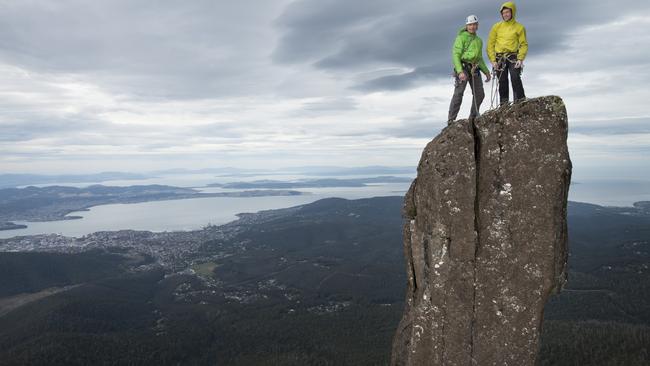Isle’s future as adventure playground to rival the best
TASMANIA is experiencing the beginnings of a boom in adventure tourism.

TASMANIA is experiencing the beginnings of a boom in adventure tourism, but the sector’s pioneers warn red tape and a lack of government recognition are strangling its development.
Entrepreneurs behind new businesses in guided rock-climbing, canyoning, mountain-biking, rafting and sea-kayaking believe the island has the natural resources to rival the world’s great adventure playgrounds of New Zealand, Canada and alpine Europe.
However, it can typically take two to three years to obtain permits to operate in the state’s national parks, deterring investment.
As well, there is frustration that the adventure sector — a major industry in many parts of the world — is seen as second rate and largely ignored in the millions of taxpayer dollars spent on tourism marketing.
Tasmania’s new Liberal government appears sympathetic, and is drawing up a new expression-of-interest process to open national parks to tourism operators with “sensible, low-impact” proposals.
The move could feed the embryonic boom in the adventure sector and transform Tasmania’s vast parks and reserves, which cover 45 per cent of the state, into a far bigger driver of wealth and jobs.
Those at the rock face say the key will be fostering a low-impact industry while deterring the cowboys who could damage the state’s vital clean, green and pristine brand.
Rock-climbing guide Garry Phillips, who spent almost three years obtaining permission to take clients into some of Tasmania’s national parks, sees huge potential with a streamlined — but still stringent — approval process.
The founder of Rock Climbing Adventure Tasmania, Mr Phillips said it was a mistake to see the adventure industry as catering only to testosterone-driven blokes.
“I’ve guided everyone from young kids to old adults — from people’s first steps on rock, right up to some of the highest (difficulty) grading in Australia,” Mr Phillips said.
He believed the economic benefits of a world-class adventure tourism industry were yet to be fully grasped by a state with the nation’s highest unemployment.
“The people I take guiding are not just paying me; I probably take 10 per cent of what they spend in the state on food, accommodation and travelling,” he said.
Canyoning pioneer Anthony O’Hern spent two years gaining approval from the state’s Parks and Wildlife Service to operate the state’s first canyoning company near Cradle Mountain.
“It was tough — the guy who was in charge of assessing our application said permission to mine in a park area was just one more step,” Mr O’Hern said.
“The people (in government) were good to deal with but the system makes you feel like you are swimming against the tide.”
Mr O’Hern’s Cradle Mountain Canyons, which just finished its fourth season, has grown from 400 clients a season to 1800.
Environment Minister Matthew Groom said he would soon announce plans to open up national parks to sensitive tourism.
“There should be a variety of sensible and sustainable developments that can be accessed by everyone, including the adventure tourism sector,” he said.



